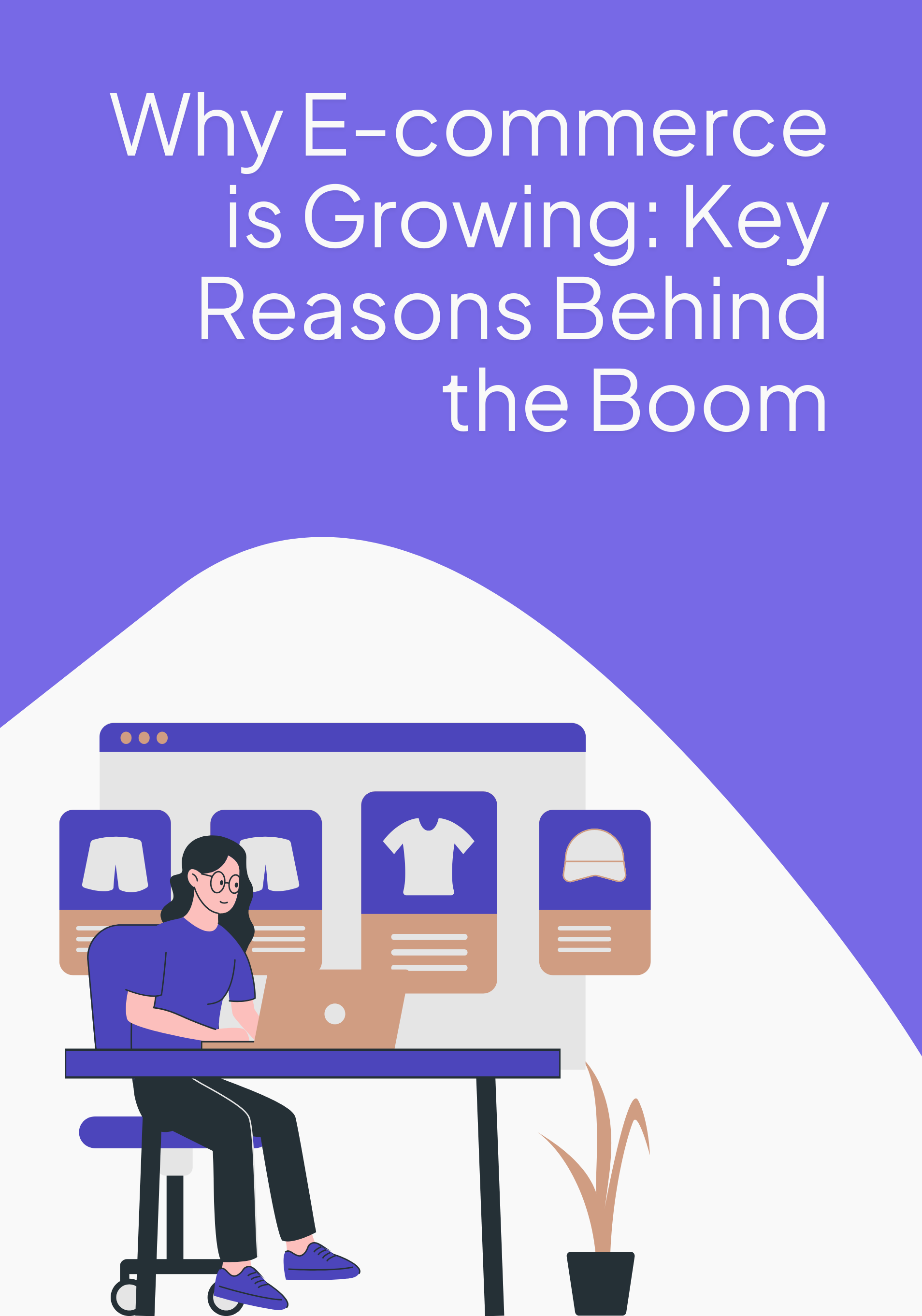Why E-commerce is Growing: Key Reasons Behind the Boom
Why E-commerce is Growing: Key Reasons Behind the Boom
In the digital age, e-commerce has emerged as a transformative force, reshaping how businesses operate and how consumers shop. With a compound annual growth rate (CAGR) of over 20% in many markets, it’s clear that e-commerce isn’t just a trend—it’s the future. Let’s dive into the key factors fueling this rapid growth.
A Rise in Internet Usage
The expansion of internet access has significantly contributed to e-commerce growth. With billions of people now connected online, more consumers have the ability to browse, shop, and compare products at their convenience.
- Affordable internet plans make online shopping accessible to rural areas.
- Rising smartphone usage drives internet accessibility.
- Emerging markets, such as India and Africa, see exponential growth in online consumers.
The Revolution in Mobile Commerce
Smartphones have revolutionized the way people shop. Mobile commerce, or m-commerce, accounts for a substantial portion of e-commerce transactions.
- Mobile-optimized websites and apps enhance user experience.
- Push notifications provide instant updates on deals and offers.
- QR code payments and mobile wallets simplify transactions.
Improved Gateways for Payments
Secure and seamless payment options like digital wallets, UPI, and buy-now-pay-later services have reduced friction in the online shopping process.
- Multiple payment methods build consumer trust.
- Instant refunds and hassle-free returns improve customer experience.
- Blockchain and cryptocurrency offer futuristic payment solutions.
Time-saving and Convenient
Consumers increasingly value the convenience of e-commerce. With a few clicks, they can have products delivered to their doorstep, saving time and effort.
- Round-the-clock shopping availability.
- Features like same-day or next-day delivery.
- Easy-to-navigate websites with user-friendly filters.
Tailored Purchasing Experiences
Advancements in Artificial Intelligence (AI) and Machine Learning (ML) enable e-commerce platforms to offer personalized recommendations, dynamic pricing, and targeted marketing.
- AI-driven chatbots provide instant customer support.
- Customized product suggestions based on browsing history.
- Location-based offers and notifications increase engagement.
The Impact of Social Media
Social media platforms have become powerful channels for e-commerce marketing. Features like shoppable posts and influencer collaborations directly drive traffic to online stores.
- Instagram and TikTok integrate shopping features.
- User-generated content (UGC) boosts authenticity and trust.
- Viral trends and challenges promote product visibility.
International Presence and Market Development
E-commerce transcends geographical boundaries, allowing businesses to tap into global markets. Cross-border shopping has gained traction, enabling small and medium enterprises (SMEs) to compete with larger brands.
- Multilingual websites attract diverse audiences.
- International shipping and localized payment options facilitate global sales.
- Export-oriented platforms help SMEs scale globally.
Shift Caused by Pandemic
The COVID-19 pandemic accelerated e-commerce adoption as physical stores closed and consumers turned to online shopping. This shift has created lasting habits, with many consumers continuing to prefer digital-first shopping.
- Contactless delivery options ensured safety.
- Essential goods became more accessible during lockdowns.
- Businesses adopted omnichannel strategies to blend online and offline sales.
Eco-Friendly and Sustainable Purchasing
E-commerce companies are adopting sustainable practices, such as eco-friendly packaging and carbon-neutral shipping. These efforts appeal to environmentally conscious consumers, further boosting online sales.
- Biodegradable packaging reduces environmental impact.
- Electric delivery vehicles lower carbon footprints.
- Green certifications build brand credibility.
Key Statistics to Note:
- Global e-commerce sales are projected to reach $6.3 trillion by 2024.
- M-commerce is expected to account for 72.9% of total e-commerce sales by 2025.
- Over 90% of consumers research products online before purchasing.
Actionable Takeaways for Businesses:
- Optimize your website for mobile users.
- Invest in secure and versatile payment options.
- Leverage social media for targeted advertising.
- Focus on providing a personalized shopping experience.
- Embrace sustainable practices to appeal to eco-conscious buyers.
By understanding and capitalizing on these trends, businesses can stay ahead in the competitive e-commerce landscape. The growth of e-commerce isn’t slowing down, and those who innovate and adapt will thrive in this dynamic market.


